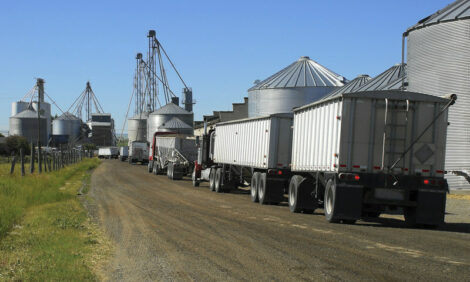



Millions of Piglets' Lives Can be Saved
DENMARK - Research results regarding feeding are being applied directly in the sow barn with the result that piglets are given a better chance of survival. This means better finances for the farmer, improved welfare for the animals and better conditions for the climate and environment.In Denmark almost every fourth piglet dies either during the farrowing process or within a few hours or days after its birth. The good news is that many of these young lives can be saved by applying research results from Aarhus University in the feeding of pregnant and lactating sows.
This is exactly what a new project led by the feed company DLG is focusing on. The project has been granted DKK 4.5 mill. by the Ministry of Agriculture’s Green Development and Demonstration Programme (GUDP).

The project aims at optimizing sow feeding in the transition period comprising the last part of gestation and the first part of lactation. The goal is to reduce piglet mortality, minimize nutrient surplus and reduce the impact on the environment.
In the course of the project DLG will develop a new sow feeding concept that builds on knowledge created by scientists from Aarhus University. Thereafter, the Pig Research Centre will demonstrate the effect of the concept and generate new recommendations for advisors and farmers.
Research-based feeding on the farm
In the first part of the project the scientists from Aarhus University will create more knowledge about how the sow’s production of colostrum and milk is improved by the new feed programme for the transition period from the last part of the sow’s gestation to the first part of her lactation. This knowledge will be used by DLG to compose new nutrient packages and transition feeds so that they can act together with the scientists’ new feeding strategy to provide the sows with an optimal nutrient supply.
"In Denmark and other countries sow feeding is based on what is practically viable for the feed industry and the farmer. Sow feeding is not based on what is optimal for the sow. This can have unfortunate consequences – particularly in the transition phase from gestation to lactation," said senior scientist Peter Kappel Theil from Aarhus University.
Typically, the sow will switch from gestation feed to lactation feed about one week before farrowing. She will thus be fed a lactation feed in the last part of her gestation, in the early part of her lactation and when her lactation is at its peak. The feed’s composition matches the sow’s requirements at the peak of lactation but not the other periods.
The first two days of a piglet’s life are the most critical and it is during this time period that mortality is at its highest. A high colostrum production is an important prerequisite for keeping the newborn piglet alive. The sow produces most of her colostrum in the week prior to farrowing which is exactly the same period in which she has to adjust to lactation feed.
The all-important fatty acids
If the sow is to satisfy her piglets’ interests as well as possible, then the feeding of her at the end of her gestation and the beginning of her lactation must be changed markedly.
In a recent study the scientists found that short-chained fatty acids increase sow colostrum production. These fatty acids originate from bacterial fibre metabolism in the sow’s caecum and large intestine. When the sow is subjected to a feed change it affects the bacterial metabolism. In addition, lactation feed contains less fibre than gestation feed. Both these factors affect colostrum production negatively.
"The reduced fibre content can also easily lead to constipation, which in turn can lead to farrowing difficulties," said Dr Theil.
The fibre content is but one of the factors the scientists will investigate in the new project. Earlier studies at Aarhus University have also shown that feed fatty acid content and composition affect colostrum production and that the feed dose is also an important factor.








